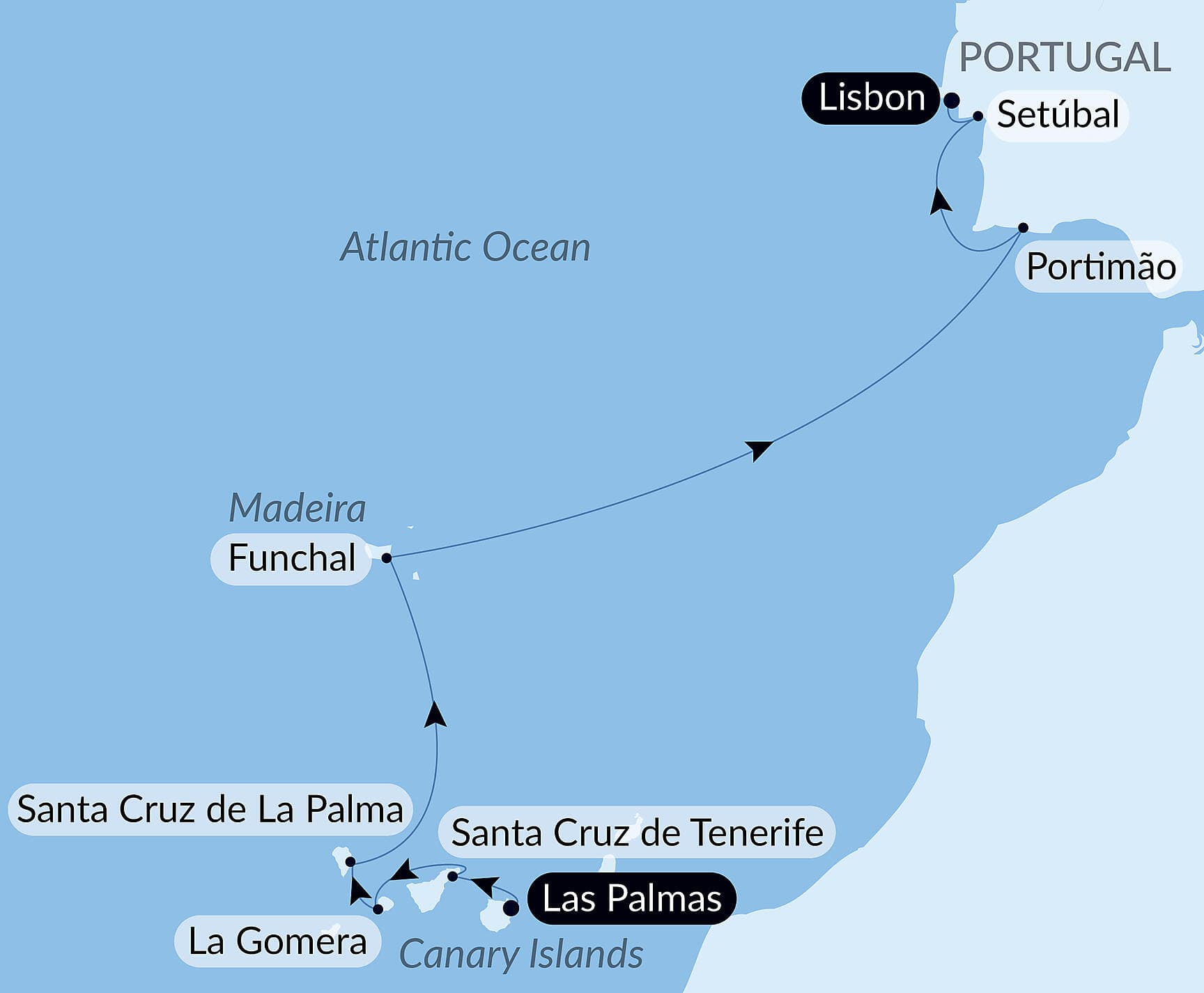Portugal
Discover the destination
Why Portugal?
13 cruises in Portugal
From
Las Palmas de Gran Canaria, Canary Islands (Spain)
To
Lisbon (Portugal)
10 nightsaboard the shipL'Austral
Next departures
Offer(s)
Back to back offer, No single supplement, Winter Offer: 10% Savings per guest, PONANT Bonus 25%
From
$5,840 /person*
From
Lisbon (Portugal)
To
Honfleur (France)
11 nightsaboard the shipL'Austral
Next departure
Offer(s)
Back to back offer, No single supplement, Winter Offer: 10% Savings per guest, PONANT Bonus 20%
From
$7,890 /person*
Cruising Southern Spain and Portugal – with Smithsonian Journeys
From
Barcelona (Spain)
To
Lisbon (Portugal)
7 nightsaboard the shipLe Boréal
Next departure
Offer(s)
Back to back offer, Winter Offer: 10% Savings per guest, PONANT Bonus 20%
From
$6,390 /person*
Cruising from Morocco to Spain’s Andalusian Coast – with Smithsonian Journeys
From
Casablanca (Morocco)
To
Lisbon (Portugal)
7 nightsaboard the shipLe Boréal
Next departure
From
Lisbon (Portugal)
To
Honfleur (France)
10 nightsaboard the shipLe Lapérouse
Next departures
Lisbon to London: Cruising Europe's Western Shores – with Smithsonian Journeys
From
Lisbon (Portugal)
To
London (United Kingdom)
9 nightsaboard the shipLe Bellot
Next departure
From
Lisbon (Portugal)
To
Ponta Delgada, Azores (Portugal)
8 nightsaboard the shipLe Boréal
Next departure
From
Oslo (Norway)
To
Lisbon (Portugal)
12 nightsaboard the shipLe Lapérouse
Next departure
From
Bordeaux (France)
To
Lisbon (Portugal)
9 nightsaboard the shipLe Boréal
Next departure
From
Bordeaux (France)
To
Lisbon (Portugal)
10 nightsaboard the shipLe Champlain
Next departure
From
Lisbon (Portugal)
To
Bordeaux (France)
10 nightsaboard the shipLe Bellot
Next departure
London to Lisbon: Cruising Europe's Western Shores – with Smithsonian Journeys
From
London (United Kingdom)
To
Lisbon (Portugal)
9 nightsaboard the shipLe Champlain
Next departure
*Price is per person, based on double occupancy, based on availability, and subject to change at any time. The category of stateroom to which this price applies may no longer be available.
More Inspiration
Upcoming departures, unique experiences, interviews, exploration or scouting stories — all brochures can be ordered in print or downloaded in digital format.

























